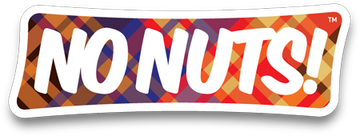What to Eat and What to Avoid When You Have a Food Allergy
Jul 07, 2025
Schools and daycares have become increasingly vigilant about food allergy awareness and prevention, but food allergies aren't just a concern for children. While many food allergies begin in childhood, you can develop them at any age. In fact, about half of food-allergic adults developed their allergies after reaching adulthood. When you discover you're suddenly allergic to something you've been eating your entire life, one question immediately comes to mind:
What Can I Eat?
The simplest way to prevent allergic reactions is to avoid the food that triggers them. However, this approach isn't as straightforward as it sounds.
Many food products and meals contain unexpected ingredients, or they might be cross-contaminated with allergens during production or cooking. Navigating ingredient labels and restaurant menus requires diligence. You need to carefully research products and ask questions at restaurants to avoid triggering your food allergy symptoms.
Fortunately, the Food and Drug Administration (FDA) requires all regulated products to list major food allergens on their labels. As of 2023, these nine major allergens include:
- Shellfish
- Tree nuts
- Peanuts
- Fish
- Wheat
- Milk
- Eggs
- Soy
- Sesame (added by the FASTER Act in 2021)
While there are more than 170 different foods reported to cause allergic reactions, these nine major allergens are responsible for about 90 percent of food allergies. It's essential to thoroughly check product packaging before buying or eating anything, and to learn about the various ways your allergen might appear in your diet.
Important Note: The FDA has recently finalized food allergen guidance documents that clarify labeling requirements and evaluate allergens not currently listed as major allergens. Always check the most current food labels, as manufacturers may update their ingredients or manufacturing processes.
Shellfish Allergy
Shellfish is the most common food allergen for adults. Crustaceans like shrimp, lobster, and crab cause the majority of reactions and tend to produce more severe symptoms. Mollusks are another type of shellfish that includes clams, mussels, oysters, and scallops. Allergies to mollusks are rarer, and most people allergic to crustaceans aren't also allergic to mollusks. Because of this, food manufacturers aren't required to include mollusks on food labels.
If you have a serious shellfish allergy, it's best to avoid seafood and sushi restaurants entirely. When enjoying Asian cuisine, speak with restaurant staff before ordering any Chinese, Thai, Japanese, Vietnamese, or Korean food. Due to the risk of cross-contamination, your allergist might recommend avoiding all mollusks at restaurants as well.
| What You Can Eat | What You Must Avoid |
|---|---|
| Kosher foods – Shellfish is not part of the kosher diet, so kosher-certified products are generally safe. | Barnacles Crab Crawfish Krill Lobster Prawns Shrimp |
Tree Nut Allergy
Tree nuts include a wide variety of nuts such as almonds, pistachios, and cashews. Similar to shellfish allergies, when you're allergic to one type of tree nut, there's a good chance you're allergic to others as well.
Peanuts are different—they're legumes, not tree nuts. However, they're often manufactured and processed in the same facilities, so you need to be careful if you replace tree nut products with peanut products. Many pastries, desserts, and ice creams contain tree nuts, so you might need to avoid bakeries and ice cream parlors.
According to recent FDA updates, coconut and kola nut are no longer considered tree nuts for allergen labeling purposes, which may provide more options for some individuals with tree nut allergies.
| What You Can Eat | What You Must Avoid |
|---|---|
| Peanuts Peanut butter Peanut oil Peanut products Coconut oil Coconut butter Sunflower butter Sunflower oil |
Almond paste Almonds Beechnuts Brazil nuts Butternuts Cashews Chestnuts Hazelnuts Ginkgo nut Hickory nut Macadamia nut Marzipan Nut extract Nut butters Nut milks Nut oils Pecans Pesto Pine nuts Pistachios Pralines Shea nuts Walnuts |
-
While peanuts and tree nuts are distinct, suggesting peanut products as safe substitutes may be risky unless a peanut allergy has been definitively ruled out by an allergist.
-
Cross-reactivity is possible and must be evaluated case-by-case.
Peanut Allergy
Schools, daycare centers, and other kid-friendly places are often peanut-free. That protection typically disappears in adult environments—even though 80 percent of people don't outgrow their childhood peanut allergy. There's a chance you're also allergic to tree nuts, so work with your allergist to determine if you need to avoid all types of nuts.
Peanuts are commonly used in African, Asian, and Mexican cuisine. Take great care to avoid foods that contain or may have come in contact with peanuts in these dishes.
| What You Can Eat | What You Must Avoid |
|---|---|
| Coconut butter Coconut milk Coconut oil Nut butters Nut extracts Nut milks Nut oils Sunflower butter Sunflower oil Tree nuts |
Beer nuts Mixed nuts Peanut butter Peanut flour Peanut oil Peanuts |
Fish Allergy
Finned fish like salmon, tuna, and halibut are common allergens. Unlike the tree nut-peanut connection, fish allergies and shellfish allergies aren't linked. Being allergic to fish doesn't increase your odds of being allergic to shellfish. However, it does make you more likely to have an allergy to another type of fish.
Seafood and sushi restaurants should be on your "Do Not Go" list. You should also be cautious about supplements, which aren't regulated by the FDA. Omega-3 comes from fish oil and is commonly added to various products.
| What You Can Eat | What You Must Avoid |
|---|---|
| Crab Lobster Shrimp Mussels Clams Oysters Scallops |
Anchovies Caviar Fish flavoring Fish flour Fish oil Fish sauce Fish stock Freshwater fish Omega-3 Roe Saltwater fish Seafood flavoring Shark Sushi |
Wheat Allergy
A wheat allergy is different from celiac disease or gluten sensitivity. Wheat allergies are more common in children, and most grow out of it by age three.
People with celiac disease have a problem digesting gluten from wheat, barley, and rye, but not from other grains. If you have a wheat allergy, you don't always have to follow a gluten-free diet—you just need to avoid wheat specifically. However, since wheat is the most commonly used grain in the U.S., you'll need to find many substitutes when selecting baked goods and processed products.
| What You Can Eat | What You Must Avoid |
|---|---|
| Amaranth Barley Corn Oats Quinoa Rice Rye Tapioca |
Bread Bread crumbs Bulgur Croutons Couscous Crackers Farro Flour Pasta Seitan Spelt Sprouted wheat Wheat and wheat gluten Wheat grass Whole wheat berries |
-
Barley and rye are listed as safe, but individuals with wheat allergy may also react to these depending on the specific allergy. This is fine for general guidance but should be noted with caution.
Milk Allergy
Often confused with lactose intolerance, a milk allergy is an immune response to milk, not a problem digesting lactose. It's essentially a dairy allergy—you're allergic to all foods containing cow's milk.
Milk allergies are most common in infants. While many children outgrow them, those with seasonal allergies, asthma, or other food allergies are more likely to have milk allergies persist into adulthood. If you still have a milk allergy as an adult, you'll need to follow a dairy-free diet and may need to avoid goat's milk as well.
| What You Can Eat | What You Must Avoid |
|---|---|
| Almond milk Cashew milk Coconut milk Coconut butter Margarine Mayonnaise Non-dairy creamer Non-dairy yogurt Oat milk Rice milk Sorbet Soy milk Vegan food products |
Butter Buttermilk Cheese Cream Custard Pudding Ranch dressing Sour cream Whey and whey protein Yogurt |
-
Margarine, mayonnaise, and non-dairy products may contain traces of milk unless explicitly labeled “dairy-free.” A footnote could be added for caution.
Egg Allergy
Egg allergies are the second most common food allergy in children but are extremely rare in adults. Most children outgrow an egg allergy by age five. This allergy is specific to chicken eggs, but most people with egg allergies also need to avoid all bird eggs.
Eggs are found in many unexpected products. Various ice creams, pasta, and foamy coffee drinks contain eggs. You'll need to look for egg-free alternatives.
Eggs are a core ingredient in baked goods. If you have a mild egg allergy, you might tolerate most baked goods with your allergist's approval because the amount of egg is usually minimal. You can also substitute eggs with different binding ingredients in your own baking.
| What You Can Eat | What You Must Avoid |
|---|---|
| Vegan egg substitutes and food products | Egg whites Egg beaters Eggnog Mayonnaise Meringue |
-
Buttermilk is dairy-based and not egg-free— clarified as unsuitable for dairy or egg allergies.
Soy Allergy
Soy is another common childhood allergy. Soy allergies typically appear early in babies and often resolve before kindergarten. Soybeans are legumes like peanuts, but the allergies aren't related. Having a soy allergy doesn't increase your likelihood of being allergic to peanuts, beans, peas, or lentils.
While soybeans aren't a staple of the American diet, they're found in the vast majority of processed foods—similar to wheat, milk, and eggs. In many cases, a soy protein called lecithin is used as a food additive and stabilizer. Most people can safely eat products with lecithin without experiencing a reaction. Read labels closely to know which soy ingredient is present.
| What You Can Eat | What You Must Avoid |
|---|---|
| Vegetable-based meat alternatives Almond milk Coconut milk Cashew milk Cow's milk Goat's milk Rice milk |
Asian cuisine Edamame Miso and miso soup Soy milk Soy sauce Soybeans Tempeh Tofu |
-
Cow’s milk and goat’s milk are not suitable for people with milk allergy.
Sesame Allergy
Sesame was added to the list of major food allergens in 2021 through the Food Allergy Safety, Treatment, Education, and Research Act (FASTER Act). Sesame allergies are becoming increasingly common and can cause severe reactions.
Sesame can be found in various foods including bread, crackers, hummus, tahini, and many Middle Eastern and Asian dishes. It may be listed under different names such as benne, gingelly, or sesamol, making it important to read labels carefully.
| What You Can Eat | What You Must Avoid |
|---|---|
| Alternative seed butters (sunflower, pumpkin) Nut butters (if not allergic) Olive oil Canola oil Other vegetable oils |
Sesame seeds Sesame oil Tahini Hummus Benne/benne seed Gingelly Sesamol Many breads and crackers Falafel Halvah Middle Eastern cuisine |
What You Can Substitute for Eggs:
- Applesauce
- Arrowroot
- Aquafaba
- Baking soda + vinegar
- Buttermilk
- Chia Seeds
- Flaxseed
- Mashed banana
- Nut butters
- Silken or soft tofu
- Soy
- Yogurt
Understanding Hidden Food Allergens
One of the most challenging aspects of managing food allergies is identifying hidden allergens in processed and prepared foods. Even when you're diligent about avoiding your known allergens, they can appear in unexpected places:
- Alternative names: Allergens may be listed under technical or scientific names on ingredient labels.
- Food additives: Ingredients like emulsifiers, stabilizers, and flavorings can contain allergens.
- Cross-contamination: Food may be processed on shared equipment with allergens.
Always check for "may contain" statements on packaging, which indicate potential cross-contamination risks. When dining out, communicate your allergies clearly to restaurant staff and ask about preparation methods to avoid hidden allergens.
Preventing Cross-Contamination
Cross-contamination occurs when an allergen is accidentally transferred from one food or surface to another. To minimize this risk:
- Use separate cutting boards, utensils, and cookware for allergen-free foods
- Wash hands thoroughly before and after handling food
- Clean all cooking surfaces, equipment, and utensils with hot, soapy water
- Store allergen-free foods separately, preferably above allergenic foods
- Prepare allergen-free meals first, before handling allergenic ingredients
When eating out, inform restaurant staff about your allergies and ask about their protocols for preventing cross-contamination. Some restaurants have special procedures for preparing allergen-free meals.
Food Allergy vs. Food Intolerance
It's important to understand the difference between a true food allergy and food intolerance:
| Food Allergy | Food Intolerance |
|---|---|
| Involves the immune system | Involves the digestive system |
| Can be life-threatening | Typically not life-threatening |
| Even tiny amounts can trigger a reaction | May be able to consume small amounts without symptoms |
| Symptoms include hives, swelling, difficulty breathing | Symptoms include bloating, gas, diarrhea, headaches |
| Requires complete avoidance of the allergen | May be manageable with reduced intake or enzymes |
If you experience symptoms after eating certain foods, it's essential to get properly diagnosed to determine whether you have an allergy or intolerance.
How Do You Know If You Have a Food Allergy?
The only way to know for sure if you have a food allergy is to get tested by a healthcare professional.
Even if you think you're experiencing symptoms of a food allergy, there's a 50 percent chance you're mistaken. A 2019 study in the Journal of the American Medical Association found that while 10 percent of American adults have a food allergy, twice as many people thought they had one.
If you don't have an allergy, you might have a lesser sensitivity or intolerance. In that case, your diet and dining options wouldn't need to be nearly as restrictive. Before changing your eating habits, consult an allergist for testing to determine which foods you can continue enjoying and which ones you actually need to avoid.
Common diagnostic methods include:
- Skin prick tests: Small amounts of suspected allergens are placed on the skin to observe reactions
- Blood tests: Measure the presence of IgE antibodies to specific foods
- Elimination diets: Systematically removing and reintroducing foods to identify triggers
- Oral food challenges: Consuming small, gradually increasing amounts of food under medical supervision
Emerging Treatments for Food Allergies
While avoidance remains the primary management strategy for food allergies, several promising treatments are being developed:
- Oral Immunotherapy (OIT): Gradually introducing increasing amounts of an allergen to build tolerance
- Sublingual Immunotherapy (SLIT): Placing small amounts of allergen under the tongue
- Epicutaneous Immunotherapy (EPIT): Applying allergen patches to the skin
- Biologics: Medications like omalizumab that target the immune response
In 2020, the FDA approved Palforzia, the first drug for treating peanut allergy in children. More recently, omalizumab (Xolair) received approval for reducing allergic reactions to multiple foods. These advancements offer hope for improved management options beyond strict avoidance.



